Flashlights, Fog and Digital Cameras at Night |
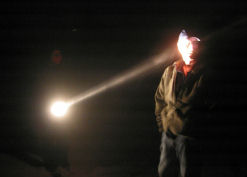

Both pictures were taken with one second hand held exposures on my Canon S40, with the 'film speed' set to ISO 400. Both unedited, other than scale and crop. Neither being terribly sharp on account of the hand held one second exposures.
Light painting...
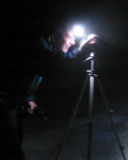 But the real reason we were out at night with flashlights and digital cameras
was that my brother Markus wanted to experiment
with 'light painting' with a Cannon digital SLR.
But the real reason we were out at night with flashlights and digital cameras
was that my brother Markus wanted to experiment
with 'light painting' with a Cannon digital SLR.
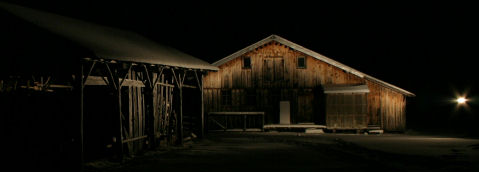 He managed to get some nice shots the night before, but wanted to do better still.
This SLR has the ability to take time exposures in the tens of seconds - something which most digital cameras,
including my S40 could not do.
He managed to get some nice shots the night before, but wanted to do better still.
This SLR has the ability to take time exposures in the tens of seconds - something which most digital cameras,
including my S40 could not do.
But the weather went from clear to fog, so the nice crisp light painting that he was planning on doing didn't work. But the fog, and some nice powerful flashlights, made for some interesting effects all its own.
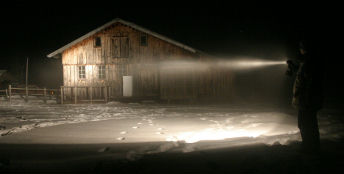
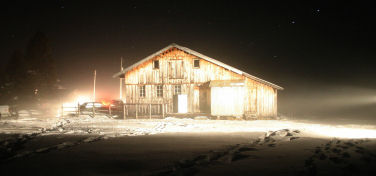
Certainly, the night image, overexposed with a flashlight reminds me of some eighties movies about extraterrestrials. Pretty amazing that anything can be overexposed with a flashlight beam too. There's a car driving away in the right shot, which is why there is extra lighting to the left of the barn.
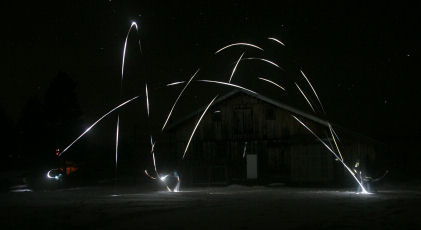 On a time exposure, any moving light makes for a streak. That is the whole
idea of the light painting. We got a little fancy in terms of making the streaks
by actually throwing the flashlight in the air. The flashlights were Petzl
Tikka LED headlamps. With the small size of the lights, and the soft snow,
there was no risk of damaging them, and with them lighting up in the snow, no
risk of losing them either.
On a time exposure, any moving light makes for a streak. That is the whole
idea of the light painting. We got a little fancy in terms of making the streaks
by actually throwing the flashlight in the air. The flashlights were Petzl
Tikka LED headlamps. With the small size of the lights, and the soft snow,
there was no risk of damaging them, and with them lighting up in the snow, no
risk of losing them either.
The streakiness of the beams is because the headlamps were spinning in the air as
we threw them, and they weren't always facing the camera.
For the final photo, we had the idea of tying the light to a string, to make for
even more interesting paths traced out by the light. I had the light
facing away from the string, so for the back part of the arc, the flashlight
doesn't show.
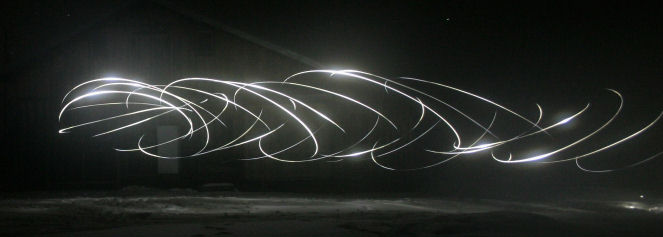
Almost looks like swirls of some colour in some highly viscous fluid that has
been stirred some.
I should also add that these sorts of experiments probably don't work well in densely populated areas. You need the kind of darkness where the sky is just full of stars. It never gets dark enough for this in the city.
Related pages on this site:
Back to my home page